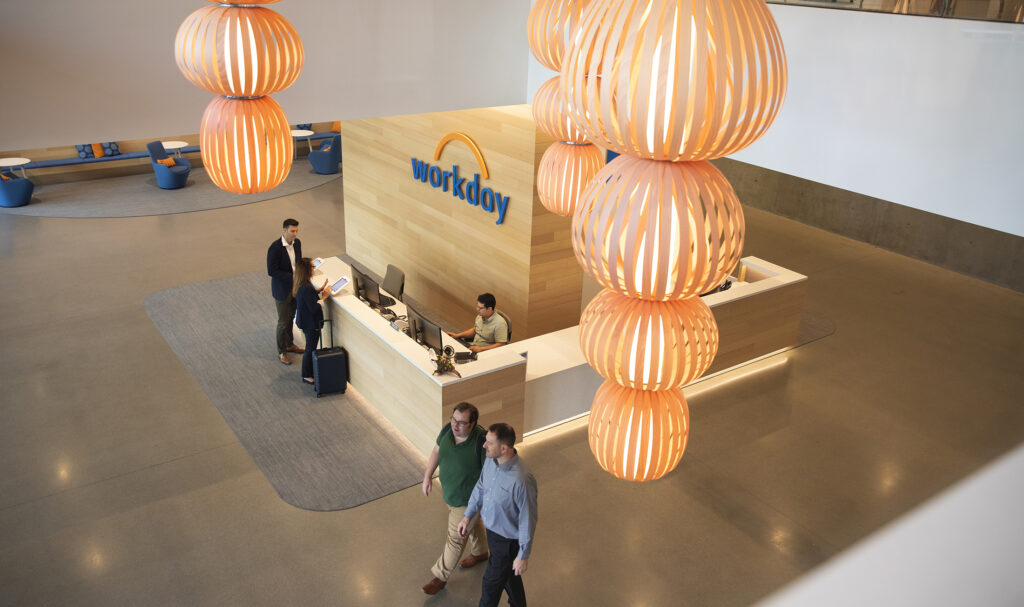How Workday’s CIO is embedding AI into the flow of work

When Rani Johnson joined Workday 2.5 years ago as CIO, ChatGPT was just bursting onto the scene. She sensed the new technology was going to be significant and went to work to apply it operationally across the company.
Early in her tenure, her predecessor, Sheri Rhodes, who moved on to become chief customer officer, suggested that Johnson create an executive council. This would provide a formal way to brief executives and establish a structure for managing the new technology. This idea evolved into two distinct groups to facilitate cross-company communication: a Gen AI exec advisory and an AI tech advisory. Johnson explained that this two-forum approach was designed to drive innovation and ensure strong governance.
“Those two forums were meant for us to build the infrastructure to ignite and harness the innovation, but also make sure we had the infrastructure to govern it and were doing it thoughtfully and responsibly,” Johnson told FastForward.
As the company entered this year, internal data showed that only about half of employees were regularly using enterprise AI tools like Gemini, Microsoft Copilot, Slack AI and Zoom AI. Johnson and her team set an ambitious goal to significantly increase AI adoption across the entire workforce. To achieve this goal, she launched a program called ‘EverydayAI,’ aimed at getting employees to use AI tools as a natural part of how they work.
Achieving EverydayAI
That objective required a structured approach to ensure that people had the tools and training they needed to use AI effectively. “We wanted to make sure that we were not only demystifying AI, but also teaching through learning campaigns,” Johnson said.
The company hopes that the EverydayAI program will help employees "activate an AI mindset, build AI skills and ultimately change work habits.” Among the events she has implemented under this program was a “promptathon” to encourage people to compete for the best prompts using Gemini (Google’s large language model), a program she found helps boost worker confidence in using the tool on the job.

They have also held an AI expo where workers could share experiences and tips and tricks around using AI. Finally, they’ve encouraged workers to add AI-related goals to their work goals in Workday as a way to embed AI into their work plans. The approach appears to be working. Recent internal surveys show that 79% of employees have been using AI in some capacity on the job — a jump of more than 37% since the start of the year.
Meanwhile, on the IT side, Johnson’s team has been looking at ways to implement agents across the company to automate some internal processes.
Layering on agents
As companies start using agents in various industries, Workday has embraced this idea on the product side by providing an agentic management layer they call the ‘Agent System of Record’ (ASOR) along with an agent gateway designed to help developers. The ASOR provides a centralized dashboard for IT to manage agents inside an organization, while the gateway enables developers to programmatically interact with Workday agents and other Workday tools.
Internally, like many CIOs, Johnson’s team is working to move beyond question and answer chatbots. As Box CEO Aaron Levie told me in a recent FastForward interview, agents can handle more complex tasks, follow instructions and automate workflows.

To that end, under Johnson’s leadership, the company is also putting agents to work operationally. Recognizing some of the limitations around identity and security, she has deliberately tried to limit the agents that her company deploys to a single domain like customer service or the IT help desk. “We've launched agents to support our customer support teams. These agents are servicing a single, contained domain, and so the agent assisting them only has access to sources in that domain,” she said.
“We've not been able to start to do what we call that cross-domain yet, because the passing of access control and identity cross-domain gets much more complex,” she said.
Mentoring and staying ahead
For Johnson, the job is more than managing the IT infrastructure and trying to help her company’s employees successfully navigate the changes AI is bringing to every organization. As a leader and a Black woman, she wants to give back and help others, just as others mentored her, especially since she didn’t see many people who looked like her in these roles when she was starting out 30 years ago.
As a deeply introverted person, it’s not her natural inclination to reach out to people, but she recognizes that it’s extremely important. “I wouldn’t be where I am without people investing in me. It’s probably the most meaningful work that I get a chance to do in my career — to inspire people,” she said. “If I get a chance to sit in this seat and I don’t do something to inspire people, I miss that opportunity.”
I wouldn’t be where I am without people investing in me. It’s probably the most meaningful work that I get a chance to do in my career — to inspire people.
In addition to mentoring individuals, she works regularly with startups, many of which are Workday Ventures portfolio companies. For these partnerships to succeed, she believes constant communication and a focus on production-level support are essential. “I meet weekly with [each startup's] CEO to just make sure that we're totally aligned, and that the support and service that we need to support a production grade solution [is in place],” she said.
Her leadership is being recognized. She was recently named number four on Technology Magazine’s list of top 100 women in tech. “I want to be good at my job, not just for myself or for Workday, but to show others the work it takes, and the responsibility you have to give back when you get the privilege of sitting in a seat like I do.”
Featured photo courtesy of Workday.





